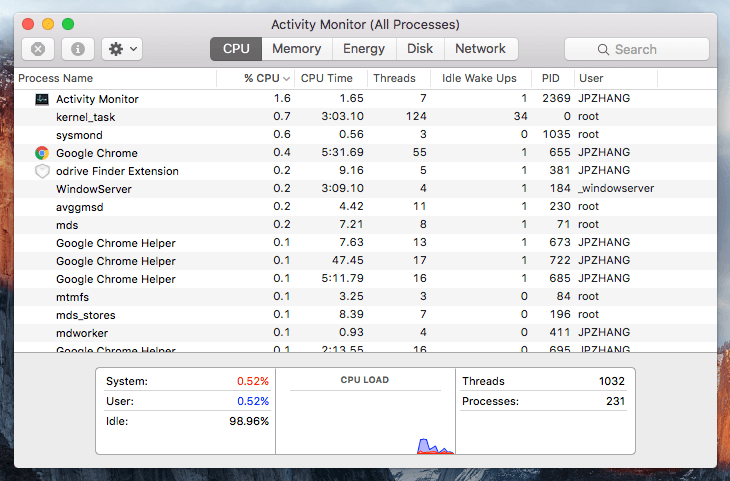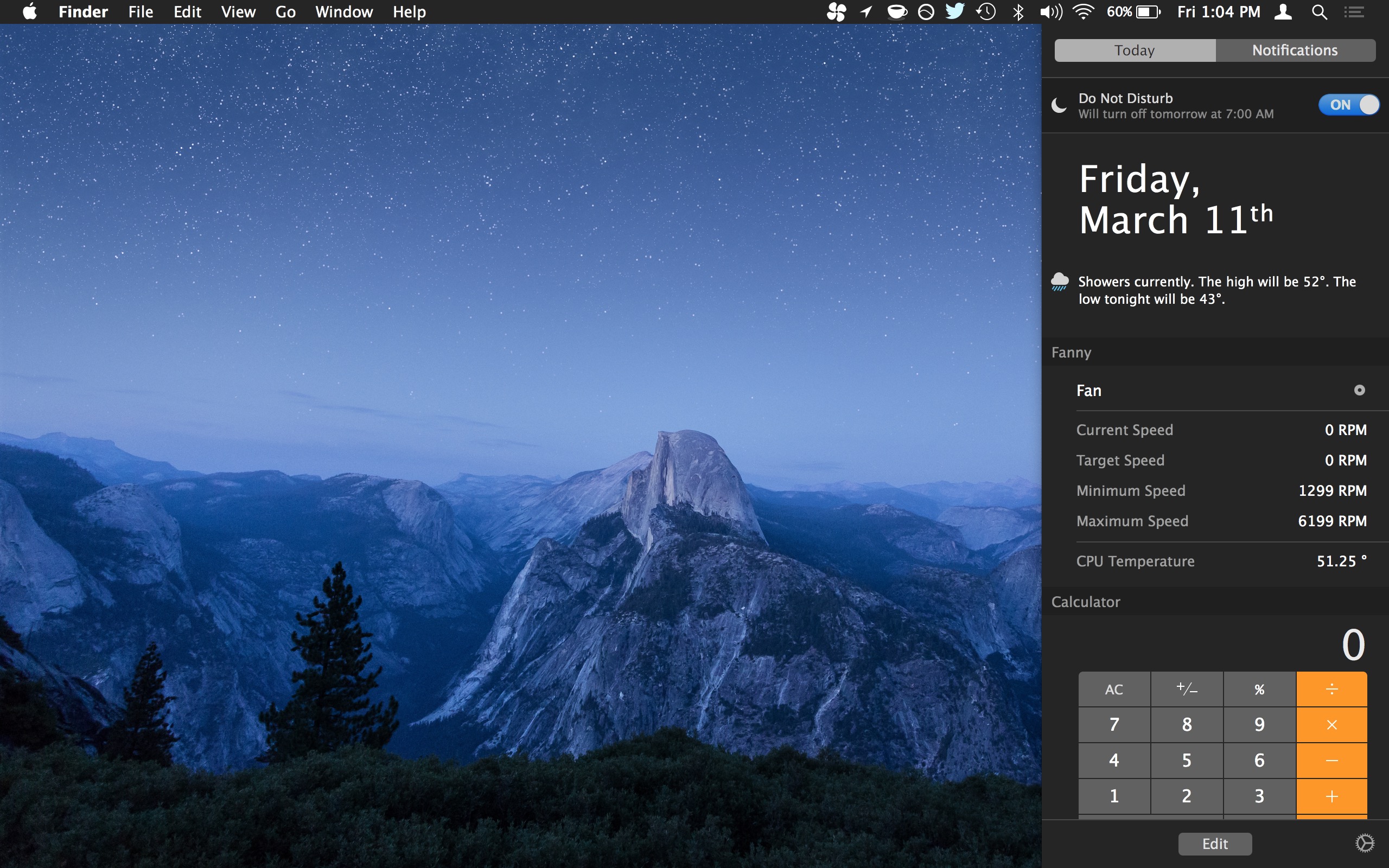Feb 26, 2020 User: The percentage of CPU capability currently used by apps that you opened, or by the processes those apps opened. Idle: The percentage of CPU capability not being used. CPU Load: The percentage of CPU capability currently used by all System and User processes. The graph moves from right to left and updates at the intervals set in View. Nov 28, 2018 The go-to app for setting a custom fan speed on Windows 10 is SpeedFan. It’s a pretty great app but in some cases your system’s fans may not show up in the Fan tab. Download and install the app. On the Readings tab, click the Configure button. Make sure you heed every single warning the app gives you. In the Configure window, go to the Fans.
Some Apple products contain sensors that respond when they detect temperature changes inside your system or device, turning on fans to bring cooling airflow to critical components.
About fan noise
If your device's processor is working on intensive tasks—such as compressing HD video, playing a graphics-heavy game, or indexing the hard drive with Spotlight after you migrate data—the fans run faster to provide additional airflow. You might hear fan noise when this happens, especially if you're in a quiet environment. This rushing-air sound is a normal part of the cooling process.
Ambient temperature, the temperature outside the device, also plays a role in the fans' responsiveness. If the ambient temperature is high, the fans turn on sooner and run faster.
If you hear the fans in your Mac Pro running at full speed and you aren't performing any intensive tasks, check the enclosure. Make sure that your Mac Pro is locked and fully seated, or that the top cover or access door is closed and locked on rack-mounted models.
Make sure the vents on your Apple product aren't blocked
Some Apple products have vents that let fans bring in cool air and expel hot air. Make sure that the vents aren't blocked to allow your device to perform at its best.
- Apple TV 4K has a fan and a vent at the bottom.
- Airport Extreme and Airport Time Capsule have fans and vents at the bottom.
- iMac has vents along the bottom edge and on the back.
- iMac Pro has vents along the bottom edge and on the back.
- Mac mini has vents at the bottom to bring in cool air from beneath the device and vent hot air from the back.
- Mac Pro has three fans on the front of the computer and vents on the front and back.
- MacBook Pro has vents along the side and on the back. MacBook Air computers have vents along the back near the clutch.
The surface your device rests on can block its vents, affecting fan behavior. If you use your device on a soft surface like a couch, pillow, bed, or your lap, its fans might run more. Using your device on a hard, flat surface like a table or desk is best for temperature control.
Learn more
If the fans in your Mac run fast even when it isn't experiencing heavy usage and is properly ventilated, you might need to reset the System Management Controller (SMC) on your Mac. If you're experiencing this issue on an Apple TV 4K, Airport Extreme, or Airport Time Capsule, unplug the device, then plug it back in.
Learn more about the operating temperature of Apple notebook computers.
Mac Cpu Cooling Fan App Free
Apple takes great strides to ensure that your Mac thermals run well within the hardware specifications automatically without consumer intervention. The goal for Apple is to give you the best possible performance while keeping the system as quiet as possible all whilst using the least amount of power. And they do a pretty decent job of it too. However, sometimes you may wish to forego the quiet for cool. Or perhaps forego the cool for quiet. You can take more direct control over your Mac's fan speeds with the Macs Fan Control app!
Why bother overriding the fans
If you are one to leave well enough alone, then this is not something you'd want to delve in to. As mentioned, Apple does its homework when it comes to what fans should run at what speeds for the amount of heat and power being produced and used. It ensures that your Mac being a MacBook, MacBook Pro or even a Mac Pro can function with decent capabilities while maintaining stability and safe operating temperatures.
Amd Cpu Cooling Fan
That being said, even Apple is a prisoner to the hardware specs. If a CPU starts to run at too high of an operating temperature, it will have to throttle its frequency to a lower setting. This lowering of frequency allows the CPU to run less power and in turn run cooler thus lowing the operating temperature. This avoids damaging the CPU. However, the lowering of the frequency also lowers the performance capabilities of the CPU. Making it run your tasks slower as a result.
In order for the CPU to not throttle its frequency to a lower state, sufficient cooling must be available to avoid high operating temperatures. Sufficient cooling means faster fan speeds. Faster fan speeds means louder computers. Apple tends to configure its hardware towards quiet operations. Since the tendency is for quieter computers, that will also mean you'll have a tendency for throttling your CPU due to higher temperatures.

If you are on that doesn't care about fan noise and want 'ALL THE POWER' then running your fans at higher spec to keep temperatures lower for longer may be what you're looking for. And vice versa, if you want quiet operation for a long as possible, then limiting when your fans speed up or slow down may be in your best interest. But be warned!
Some warnings

Changing your fan speed can cause a minimum greater wear and tear on your components. Maybe unnecessarily so. At worst, you can completely destroy your hardware components if you allow temperatures to rise too greatly with adding sufficient cooling. So be aware that fiddling with your Macs designed specifications will indeed break warranty and can even break your Mac.
Macs Fan Control

If you think that you still want to go ahead and manually control your Mac fans, here's what to do.
- Download the Macs Fan application.
- Use Finder to navigate to your Downloads folder.
Drag the Macs Fan Control ** app to your **Applications folder.
- Double-click the Macs Fan Control app in Applications.
- Click Open.
You'll now see a list of Fans that you can manually override on the left and a list of current operation temperatures on the right. Let's for example decide that we want to make certain that our Mac gets the most amount of fresh cool air into the system. We can decide to override the settings for INTAKE and EXHAUST.
- Next to the EXHAUST section, click Custom.
- You can use the slider to manually set a constant fan speed at whatever you desire.
Or you can choose to set a Sensor-based value where given a certain temperature on a specific sensor one the system, the fan can start to increase speed and go to its maximum speed at yet another temperature for that same sensor. Here we choose Ambient temperature as our sensor. We left the temperature range as default.
- Click OK.
- Repeat the same steps from 1 to 4 but with the INTAKE fan.
You'll immediately hear a change in fan speed once you click OK. You can keep an eye on your sensor value to see if the change you applied makes a difference to your liking.
If you decide that you want these changes to persists after a reboot do the following.
- Click Preferences.
Check the Autostart minimized with system (recommended) box.
- Click Close.
See if the changes are worthwhile
Now you should monitor your system and the temperatures. Perform your normal tasks and see if the changes you made are 1) working like you envisioned and 2) worth the extra heat or sound emanating from your machine.
Final comments
I can make my system cool down a good 5 degrees celsius with my own custom changes but at a cost of considerably louder fan speeds. For my day to day task it's not worth it. But If I only enable my changes when I use CPU intensive tasks where I'd expect more fan noise, then for my it's worth the increase in noise. What about you? Any interest in controlling your Mac thermals? What do you do about it? Let us know in the comments!
macOS Catalina
Main
We may earn a commission for purchases using our links. Learn more.
Lawsuit timeGoogle faces privacy lawsuit over tracking users in apps without consent
Mac Cpu Fan Control
Law firm Boies Schiller Flexner has filed another lawsuit against Google. This time, the law firm has accused Google of tracking users in apps even after opting out.